|
Evolving Objets
Text by Florencia Sader
“Objectum”, the new execution by Daniel Escardó, is an
installation which brings together elements from his
artistic career and his personal experience, linking
them in a kind of retrospective of his work and life.
He gives us a few clues concerning the influences which
led him to work in his own particular way, giving us a
glimpse of his roots, part of different stages and
previous installations.
Escardó appeals to the intelligence of the public, with
a clear and plain view of his objects. He likewise shows
us the features marking their evolution, where different
parts come together in a unique expressive language.
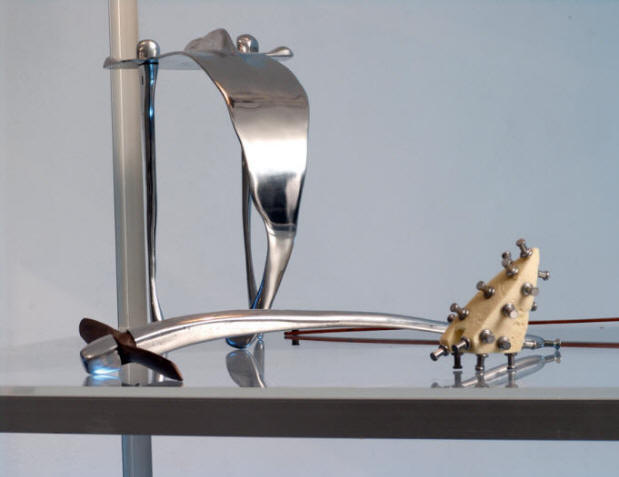
At
first, the spectator travels through a space inhabited
by metal structures displayed in different tiers. The
idea we get is that of a natural sciences laboratory,
with show windows containing samples of different
species. A closer look enables us to embark on a journey
into this strange world of inanimate objects, resembling
a jigsaw puzzle.
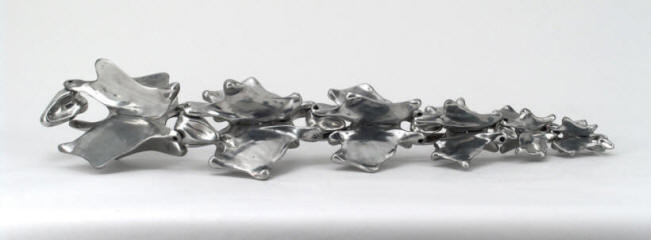
That is how the whole set starts to make sense, even for
those who have not seen previous Escardó installations.
There is an idea of superior representation, of a
cleaning process which heals, of a kind of exorcism. By
bringing in elements from the past and joining them with
current ones, a new order is created. This new order is
a deliberate effort by the artist to provide us with a
view that enables us to understand the origin of some of
his creations, the way in which his work developed, the
environment which moulded him from childhood, as well as
being a kind of riddle and a tribute to certain objects
and significance they had had in his life.
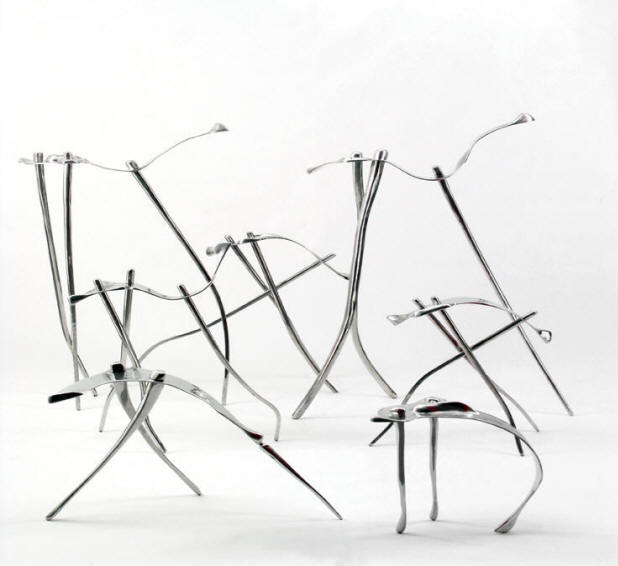
|
|
Escardó says “One of my favorite hobbies was playing
with the X-Ray equipment. At that time, notion of the
damage that radiation could cause was as yet unclear: it
was a fantastic machine which could look into the
insides of objects and people.” His curiosity has
remained feature of his personality throughout his life,
positioning him among one of the most eclectic and
consistent Uruguayan artists of his generation. Eclectic
because he has not hesitated in experimenting with
different techniques, be it photography, painting,
sculpture using different materials, or virtual reality
programs.
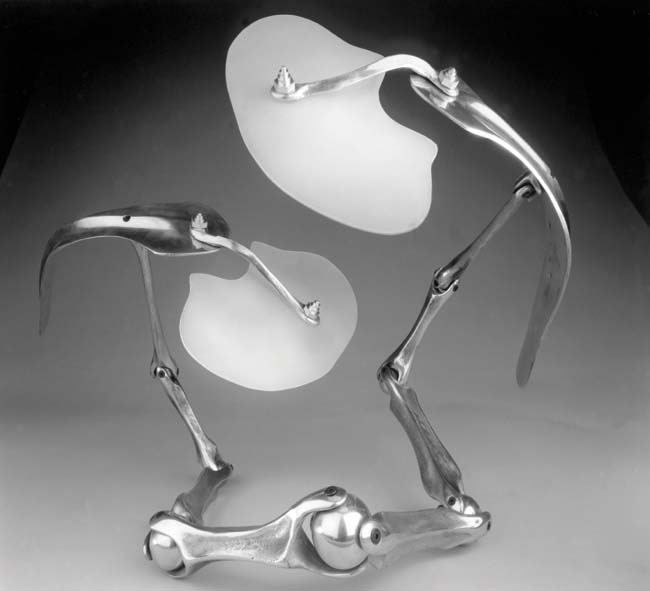
He experiments with all these means of expression and
does not waver when it comes to suddenly dropping them
and later taking them up again, in a constant search for
a language, a particular form of expressing himself
which enables him to realize the new concept he is
exploring at any given time. Simultaneously, he is also
consistent in his quest. During his entire career, his
fascination for research has led him to try out new
projects, always following the same premise: finding the
most suitable foundation on which to manifest his ideas
and bring to life a universe which he imagines possible.
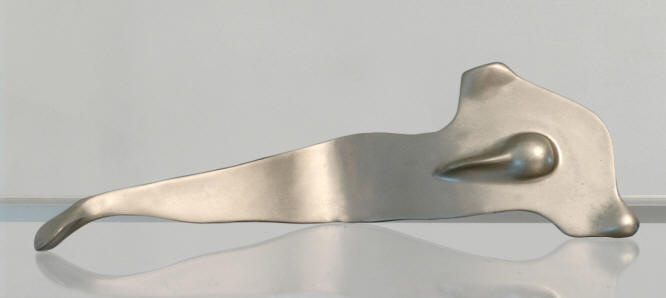
In “Objectum”, there are parts and objects which are
more current, as “Especies en Vías de Aparición”
(in English this would be “Species Making their
Appearance” as opposed to Endangered Species”),
“Salisis” and “Juguetes de Culto” (“Toys of Cult”). It
is then possible to understand to what extent his latest
executions stem from, or rely on, the previous ones. And
how it was necessary to go through those stages and
discover the keys which enabled him to construct the
subsequent generation.
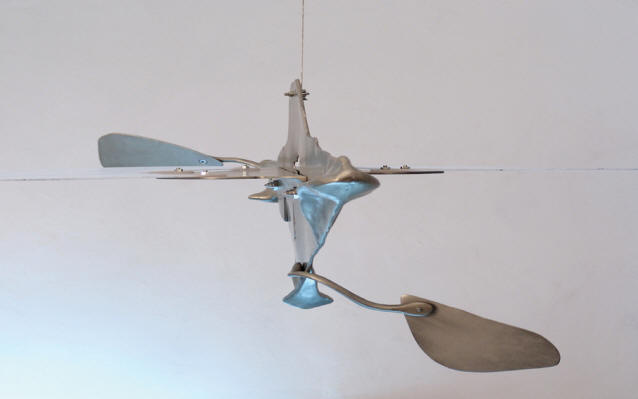
There are other ways to read his work, which have
nothing to do with any chronological order. The thread
and the pace are given by a human backbone, by a small
wooden indigenous object, or by a sculpture fragment
generated by patterns which gradually increase in size.
Proportionality and order prevail in this installation,
as if classification, discrimination and the primal
sense of creation form part of the original chaos and
reveal his “modus operandi”. The architecture of
his spaces, the rigor of spatial geometry and the
accidental nature of organic life are amalgamated here
in all the coldness of a laboratory, in a rhythmic
sequence which progressively takes us into the
particular world of a rare treasures collector.
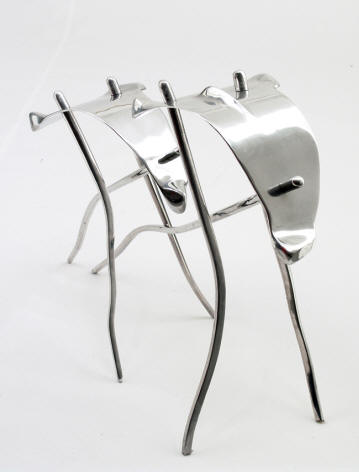
At first sight, it might seem to be a collection of
refined design objects, but then it starts to operate
like a swirl which plunges us in a special environment.
It is a world in which the pieces seem to be skillfully
laid out in a playful manner, surrounding the beholder
and exciting his senses.
Escardó leads us on a journey through his past and
provides us with hints that enable us to envisage the
future. However, this is where we find one of the
foremost characteristics of this artist: he always
manages to surprise us with his unpredictable logic and
tireless explorer spirit.
Florencia Sader
|
| The return trip
Text by Horacio
Campodónico
Every man lives in his own labyrinth of memories, which
move about but have no visible structure. They are
random images which shake the soul. However, behind
that chaos, which is merely apparent, order does exist.
In 1274, in his work “Ars
compendiosa inveniendi veritatem”
(Brief art to find the truth), Raymond Lully affirmed:
“Equilibrium, order, symmetry, are the signs through
which Divine Works are recognized”. That is why each
artist attempts, through a jungle of shapes, lines and
colors, to find those signs of the Work and bring them
down to the plane of what is materially tangible.
In “Objectum”, Escardó sets out to find this order so as
to recompose his own memories, to recognize himself and
to structure his work. At the beginning, with a child’s
look of wonderment, he starts by observing the medical
equipment which his father and grandfather used in their
profession. He is attracted by the fascination and magic
of metal, of the cables, the chrome, the mirrors, the
lenses and the strange lights which vibrate with blue
light beams.
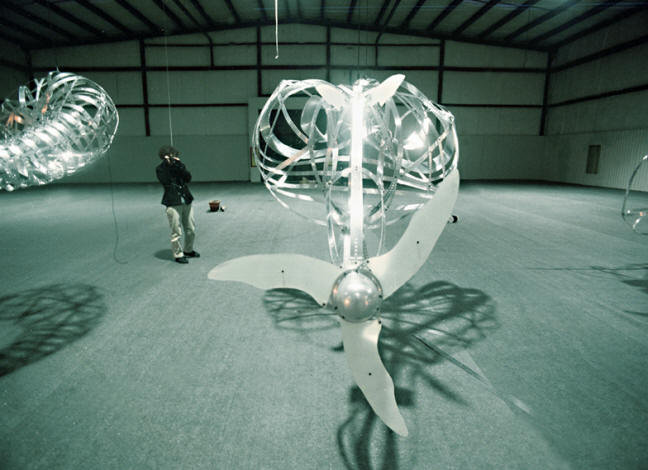
According to Schiller, the charm of beauty resides in
its mystery, and if we break down the subtle thread
which links its elements, its entire essence evaporates.
In “Objectum”, the thread of the mystery takes shape
once again in the structures that recompose this past
anew and start generating a different future.
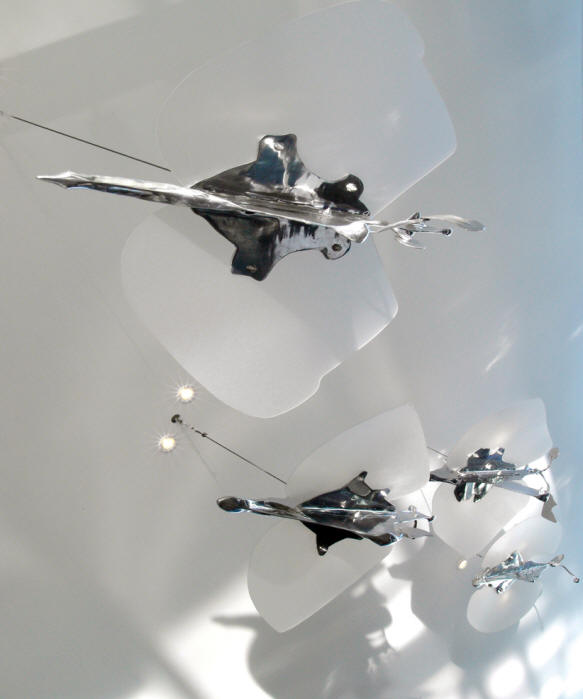
In his quest for this mystery, Escardó submerges himself
in studying the biological structures. The photo camera
becomes a research tool. The magnifying lenses, with
their capacity for amplification, explore the hidden
forms of insects, the cathedral of fibers which form the
bones, or the mazes caused by rust when it corrodes
metal.
Later on, these studies give rise to zoomorphic
sculptures which inhabit his output and the world of
“Objectum”. Metal creatures which, like the work of a
hallucinating naturalist, are created and catalogued as:
“Perromosca” (“Fly-dog”), “Pezzotto”, or “Insectopez”
(“Fish-insect”).
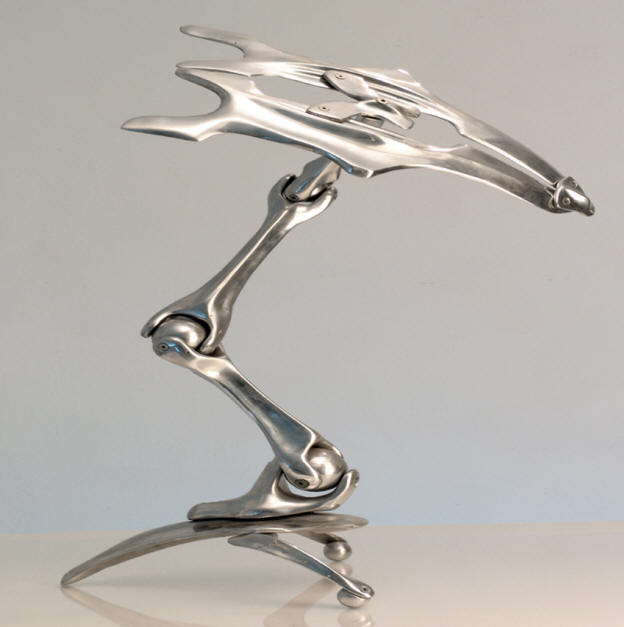
Going beyond the bi-dimensional world of the
photographic image, Escardó then starts working with
tri-dimensional bodies, albeit now processed with the
aid of computers. The time has come to learn new codes.
He understands that the texture of lichen, or of a
stone, may be trapped in a digital net and wrapped over
3D meshes. The objects gain new life. There are no
limits to modifying colors, lights and rotating
movements once the new electronic reality is used. This
is the period of “Naturaleza Digital” (“Digital Nature”)
(1997) and of “Pop-Pollock (2003).
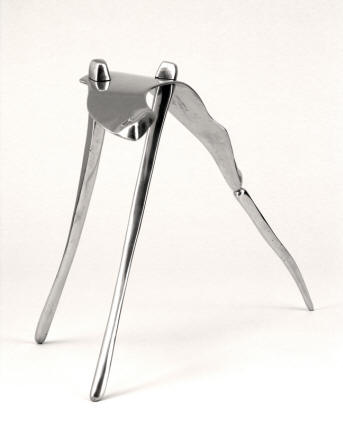
Image digitization triggers new ideas. For the ancient
Greeks, Air is the idea, thought that emerges. However,
Fire is at the very beginning, since it is the source
and encouragement of all living things. Nevertheless, it
is necessary for the power of Fire to descend on the
Earth in order to give life a material form. Thus, at
the higher plane there is Air, Fire, Earth. And at the
terrestrial plane there is Idea, Spirit, Matter.
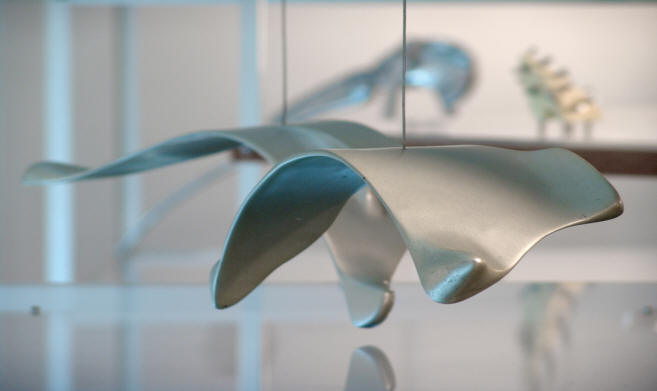
From the perfect abstraction of a computer screen,
Escardó makes the necessary return trip. The idea is now
transformed into incandescent metal which takes shape
when the smelting is poured on earth. Fire, metal,
casts, earth, polishing. That is where the new aluminum
fish shall emerge, the innumerable parts which are set
as the vertebrae in an assembled complex the order of
which is only known to the artist.
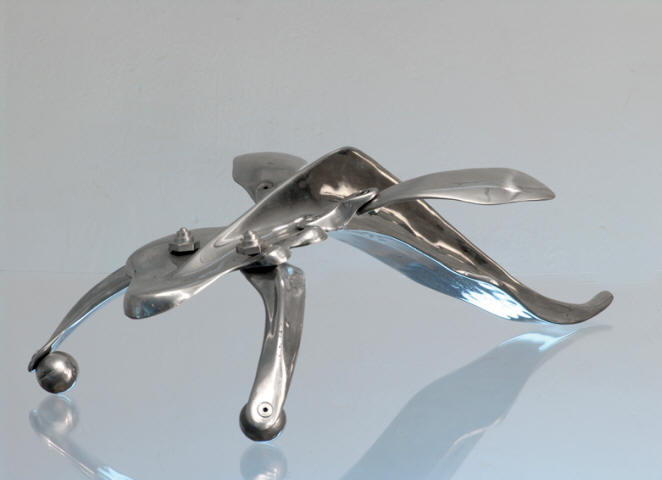
But the balance and the beauty of the living forms are
not possible in the absence of Grace. When, in 1779,
Gotthold Lessing observed how birds fly, he thought:
“Grace is beauty in motion”. It is therefore grace which
makes it possible for birds to fly.
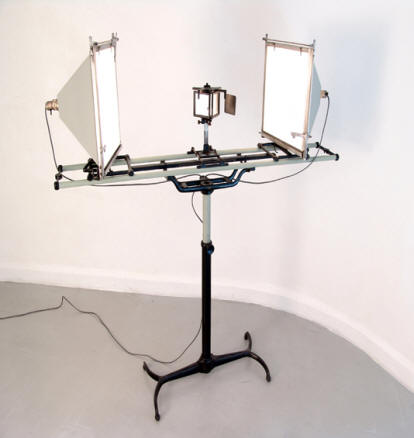
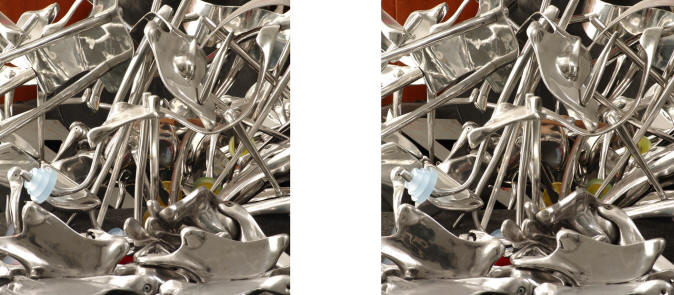
Grace, irony and humor are the spark which ignites the
mechanism of life. Otherwise, it is grave, heavy, dark.
Escardó manages to avoid falling into the abyss of
solemnity and provide his creations with grace in a
timely fashion. Consequently, his metal birds need a
wooden propeller to move in the air, or his fishes
travel over multi-colored wheels.
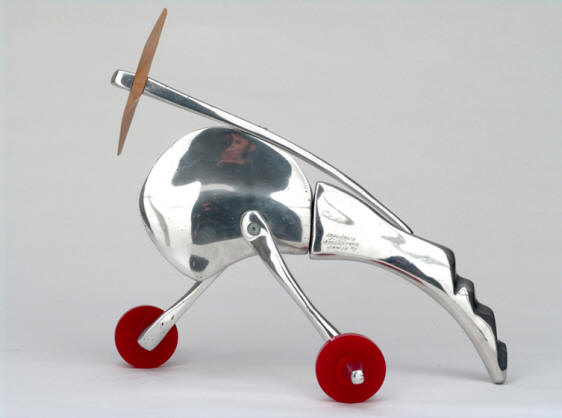
Nevertheless, the metal has its own mysteries. For the
alchemists, metals were considered as different states
of the living world, engaged in the same pursuit for
perfection as other beings. This ceaseless birth and
rebirth of everything which exists is represented by the
image of the “Ouroboros”, the snake which bites its own
tail, forming a circle: the round of Eternal Return.
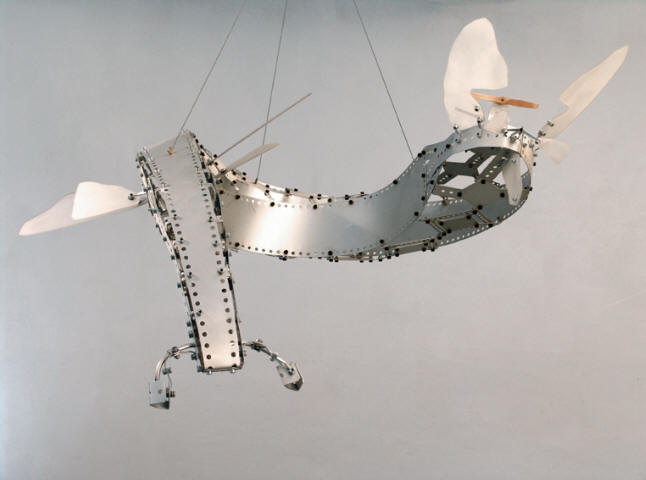
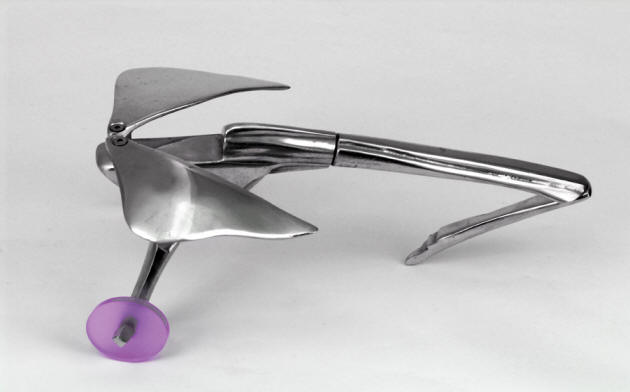
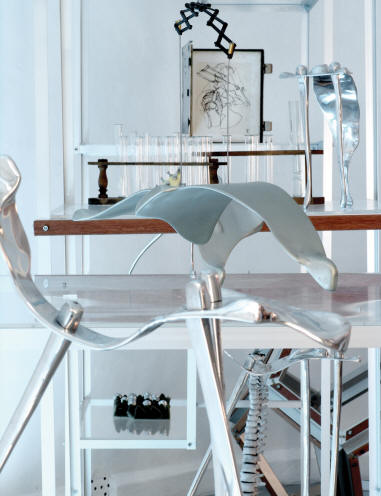 In feeding from itself with his body joined as a single
entity by its tail, the Ouroboros was also endowed with
the property of self-fecundation. Like the metal it
represents, mercury, it is the symbol of perpetuity and
endless motion, of cosmic and earthly harmony,
continually transforming and exchanging energy. In feeding from itself with his body joined as a single
entity by its tail, the Ouroboros was also endowed with
the property of self-fecundation. Like the metal it
represents, mercury, it is the symbol of perpetuity and
endless motion, of cosmic and earthly harmony,
continually transforming and exchanging energy.
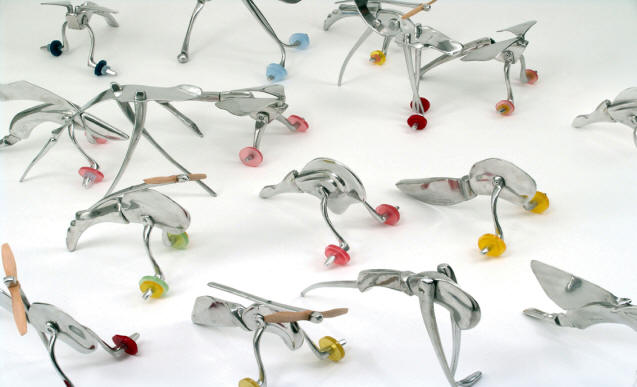
By bringing a new order into his origins and works with
“Objectum”, Escardó, like the Ouroboros of the
alchemists, closes his own circle through this
installation. But this is not the end, it is rather the
beginning of another cycle of Eternal Return, from which
new creations shall emerge.
Horacio
Campodónico
|